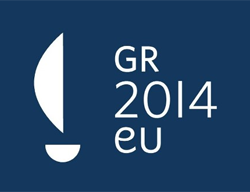External Relations
The legal basis of the External Relations policy is Title V of the Treaty on European Union and Articles 131 to 134 and Articles 177 to 181 of the Treaty establishing the European Community.
The term External Relations covers all aspects of the EU’s foreign affairs except for trade, handled as a separate policy area, and links with developing countries of Africa, the Caribbean and the Pacific (ACP) which have been based on the Lomé Convention (now the Cotonou Agreement) for nearly 30 years.
To expand and deepen relations with other countries and regions, the EU holds regular summit meetings with its main partners like the United States, Japan, Canada and, more recently, Russia, India and China, as well as regional dialogues with countries in the Mediterranean, the Middle East, Asia and Latin America. Although these relationships focused mainly on trade issues at the beginning, they have expanded over the years to cover investment, economic cooperation, finance, energy, science and technology and environmental protection, as well as political matters such as the global war on terror, international crime and drug trafficking, and human rights.
The EU’s helping hand
The EU and its member states provide about half of all international official development assistance (ODA). Each year, the European Commission hands out €6 billion in aid. This goes to beneficiaries in all continents, and is used not just for economic development projects but also to help build democratic institutions, carry out reconstruction work, draft macro-economic programmes and promote human rights.
The EU now insists that all trade and cooperation agreements with partners across the globe contain a human rights clause. This gives the Union the option to suspend all or part of an agreement if a partner country has abused human rights.
Relations with the United States
Despite its periodic tensions, the transatlantic relationship is at the heart of the EU’s external relations. The flow of trade between the EU and the United States is running at nearly €1 billion a day.
Besides six-monthly summit meetings, intensive contacts take place all the time and at all levels: business dialogues, and dialogues between consumers, trade unionists and environmentalists, as well as frequent meetings involving officials, ministers, and members of the European Parliament and the US Congress. The way the EU and the US have handled joint issues involving competition law or the recognition of each other’s technical standards has served as a model for the Union’s relationships with others, including Japan and Canada.
Russia, Eastern Europe & central Asia
In the 15 years from 1991 to 2006, the EU will have provided €10 billion of assistance to the countries of former Yugoslavia and Albania. Besides the military commitment of EU member states in Bosnia-Herzegovina, Kosovo and the Former Yugoslav Republic (FYR) of Macedonia, EU policy is focused on a series of stabilisation and association agreements as the beginning of a process that will one day bring these countries to a position where they will be ready for EU membership.
Croatia and FYR Macedonia were the first to sign such agreements. In the meantime, Croatia opened negotiations for EU membership, while in March 2004 FYR Macedonia submitted an application to join the EU, which is under examination by the European Commission.
The Mediterranean and the Middle East
The Mediterranean countries are, like Russia and eastern Europe, treated as near neighbours by the European Union. The aim here is to create a Euro-Mediterranean free-trade area by 2010. This would include the Arab states around the southern and eastern Mediterranean and Israel. Individual association agreements between the EU and each partner are one element in the relationship. Financial support in grants and loans worth about €2 billion a year is a second strand.
Contributing to efforts to establish a comprehensive peace agreement in the Middle East is a long-standing EU goal. It has appointed a special envoy to the region and cooperates closely with the United States and Russia to seek a lasting political settlement. In the meantime, the EU funds infrastructure and administrative support for the Palestinians and contributes €100 million a year to the UN agency caring for Palestinian refugees.
Regional groups
Besides bilateral relations, the European Union is intensifying relations with international organisations (including the UN, Nato and the Council of Europe) and regional groupings around the world. With its Asian partners, the EU has moved away from a strategy based on trade and aid to what it calls enhanced partnerships reflecting a better balance between the economic, political, social and cultural elements of their relations.
The EU is encouraging member countries of the Cotonou Agreement to create regional groupings of their own, where this makes economic and commercial sense, so that they can better integrate with the global economy.






 Svejo
Svejo Twitter
Twitter Link4e
Link4e Pipe
Pipe Web-bg
Web-bg Bghot
Bghot Lubimi
Lubimi Novinitednes
Novinitednes Ping
Ping Facebook
Facebook Myspace
Myspace Mix
Mix Del.ico.us
Del.ico.us Reddit
Reddit Digg
Digg Stumbleupon
Stumbleupon Myweb Yahoo
Myweb Yahoo Google Bookmarks
Google Bookmarks Google Buzz
Google Buzz

